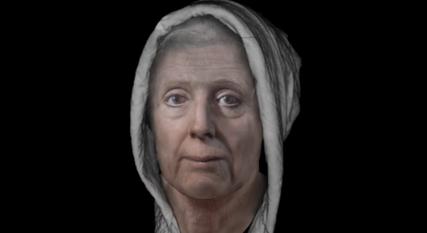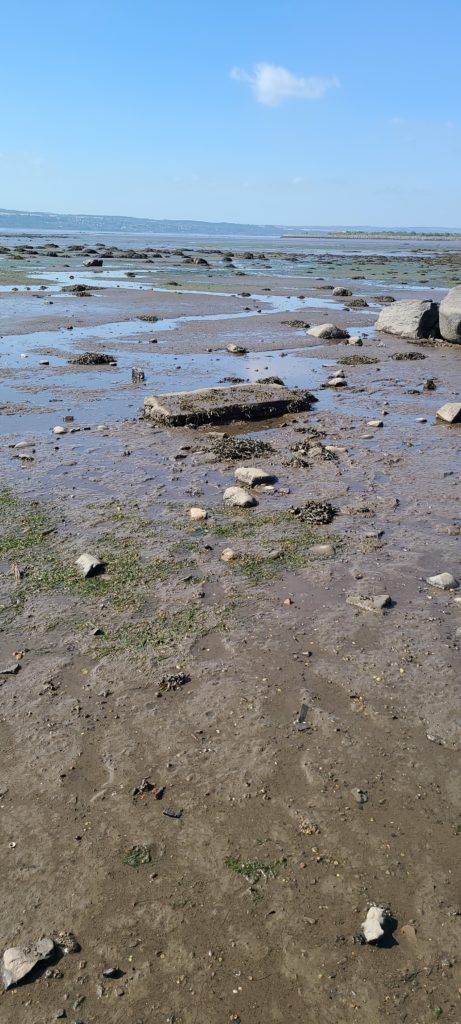The Missing Bones of Lilias Adie
They feared the witch would rise from the mud, so they locked her body in a wooden chest, buried her during low tide then lowered a half-ton sandstone slab on top of her watery grave.
Lilias Adie became one of the most infamous “witches” in Scotland, not for her crimes, but for her burial.
Who was Lilias Adie?
Born in 1640, Lilias Adie lived in the coastal village of Torryburn, Fife, Scotland. Jean Bizet warned neighbors to “beware lest Lilias Adie come upon you and your child.” Other people blamed her for causing illness. Adie stood trial for witchcraft in 1704. Her story is told through the minutes of the Kirk session. She was imprisoned for 29 days and tortured through sleep deprivation.
Confession
She confessed to having carnal relations with the devil who came to her in a cornfield. He wore a straw hat and had cloven feet like a cow. She renounced her baptism and said she met with him often. She said there were other witches but she never identified them. For her “crimes” she was sentenced to burn, but died in custody before the sentence could be carried out.
This caused a major problem.

Executions
Approximately 3,800 people were accused of witchcraft in Scotland and there were 1,400 known executions (there might have been more). While men and women were found guilty of being witches, the majority, estimated at 84%, were women.
Witchcraft was a felony and the sentence was death. A common misconception is that witches were burned alive at the stake, but they were typically strangled first, often by hanging, and then burned. Their ashes were buried unceremoniously next to the fire pit.
Since Adie was found dead in prison, no one could be sure Satan didn’t play trick on the village. They feared he would call her back to life to wreak havoc on their pious community, so they buried her during low tide and placed a heavy stone on top. Lilias Adie is the only known accused witch buried in Scotland, which made her infamous post-mortem.
Here is a picture I took of her grave when I visited Scotland this summer to research my historical fiction, Trouble the Water.

Grave Robbers
As you can imagine, her grave became a curiosity. In 1853 Joseph Neil Paton, a phrenologist, had the grave exhumed. He believed traits of a person’s character could be learned by studying their skull. They measured her femur bones and believed she would have been about six feet tall. Her wooden coffin was hacked and turned into walking sticks. Scottish-born, turned American steel tycoon, Andrew Carnegie ended up with one walking stick in his possession.
Adie’s skull ended up at the Museum of the University St. Andrews, but has since gone missing. In 1904 her remains were photographed and from these pictures, in 2017 Dr. Christopher Rynn at the University of Dundee constructed a 3D virtual model of what she might have looked like. (Pictured above).
The last time anyone saw her skull was at an exhibit in Glasgow in 1938 and her bones have been scattered and lost to history.
Renewed Interest
In 2019 council members in Fife laid a wreath on her grave to mark the anniversary of her completely unnecessary death and to remember the more than 3,800 people accused of witchcraft in Scotland between 1563 and 1736. They requested anyone who had one of her bones return it so Adie could be laid to rest in a cemetery. They hope to eventually establish a monument to honor all accused and executed.
I’ve always been fascinated by witch trials, which is probably why one ended up in my novel (coming in 2023)! Are you interested in this history too? If so, I’d love to hear what you are interested in so I can include in future blog posts.
Lisa 🙂
Copyright (c) Lisa Traugott 2022. All rights reserved.
Here’s my other story:

2 thoughts on “The Missing Bones of Lilias Adie”